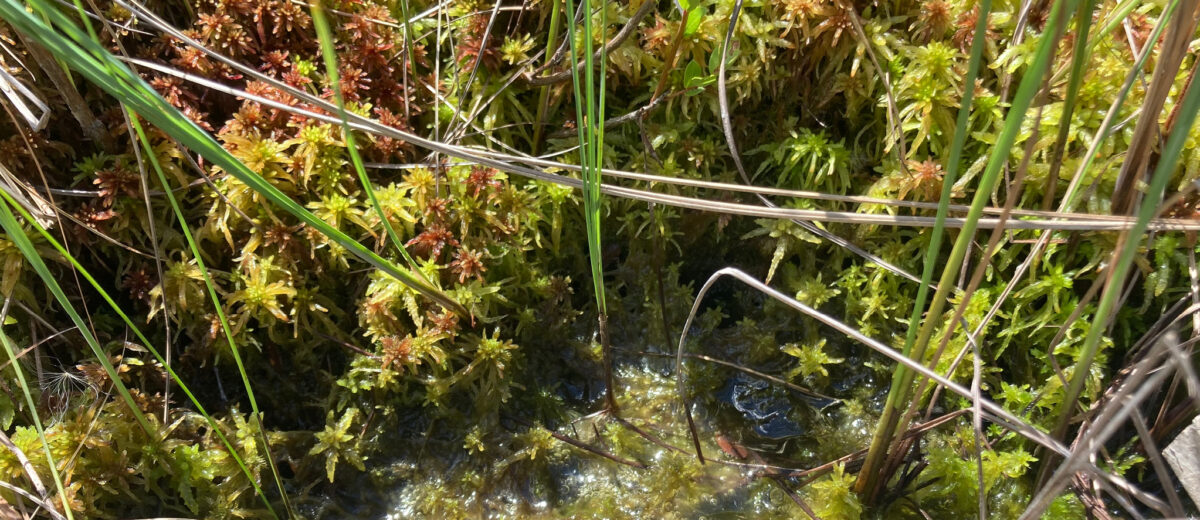by Sekou Noble-Kuchera
I often have realizations when walking on boardwalks. One afternoon, noticing the damp moss lining the Orono Bog boardwalk, I thought to myself: “No wonder they call this a wetland!”
Not my most profound thought. But I began to wonder: why is this moss so wet, and what is a wetland, anyway?
The answers can be found at the end of the last ice age. Depressions of silt and clay were exposed by melting glaciers and filled with water. Around their margins, plants grew, died, and sank, where they were decomposed into a dense, sodden soil called peat. Layers of peat accumulated at a rate of one yard per 1,000 years, gradually filling in the depressions. Finally, at many locations in Maine, central mounds amassed to form “raised bogs”. These are wetland systems which have no groundwater inputs–precipitation is their only source of water. Despite this, raised bogs stay waterlogged year-round, thanks to a thick carpet of Sphagnum moss that prevents evaporation.
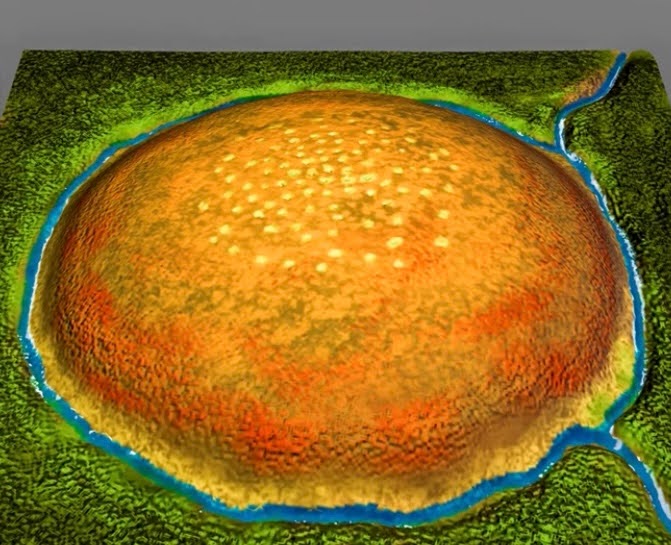
Sphagnum mats are striking from a distance, dotted with vibrant greens and reds that sprawl across the bog surface in miniature hills and valleys. These whimsically named “hummocks” and “hollows” contain a variety of Sphagnum species, each one adapted to grow at a different height above the water table. Up close, I notice that Sphagnum plants lack roots, instead relying on capillary action to draw water up to their pom-pom-like heads to sustain photosynthesis. Their tissues are spongy, and they store water in porous cells to avoid desiccation. As they die, Sphagnum remains add considerably to peat accretion, making up half of all soil volume in boreal peatlands.
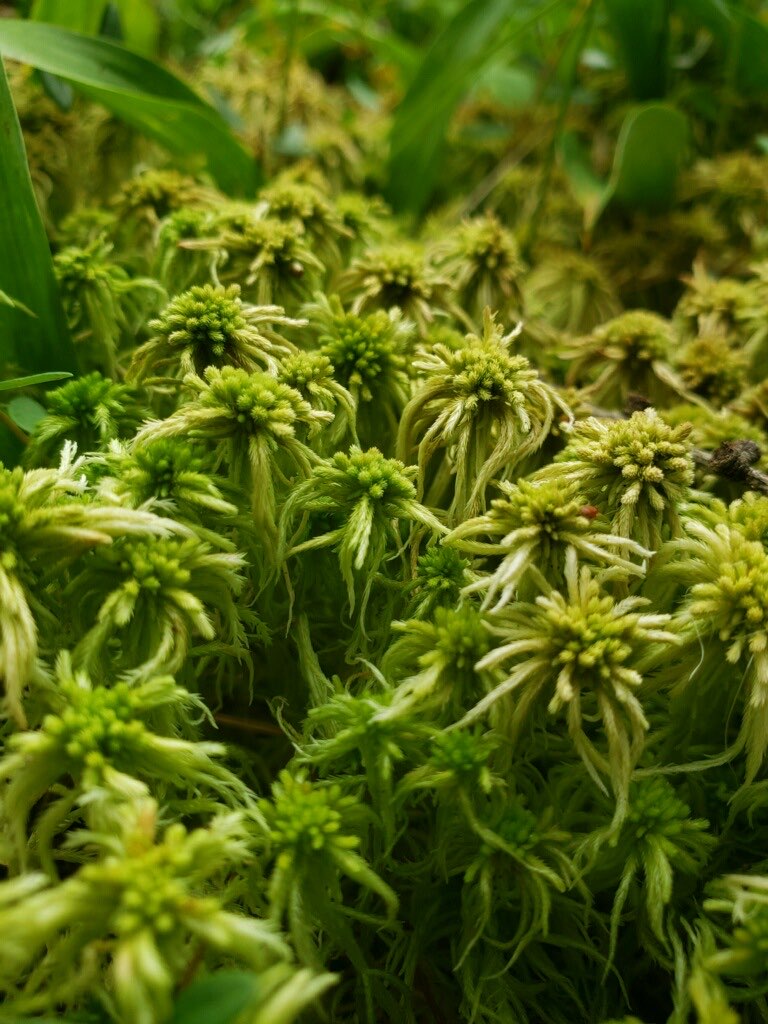
Sphagnum is prolific in bogs, influencing the physical conditions of its environment in a process known as niche construction. During its lifetime, Sphagnum acidifies soil by swapping hydrogen ions for mineral nutrients (“cation exchange”), and when it dies it releases acidic organic compounds from its tissues, including the eponymous “sphagnic acid”. Orono Bog’s porewater is almost as acidic as vinegar, with a recorded pH as low as 3.6. Vascular plants grow poorly there, simultaneously soaked, acidified, and starved for nitrogen in the low-nutrient soil. Sphagnum thrives, though, by housing nitrogen-fixing bacteria which provide it with 35 percent of its cellular nitrogen in exchange for protection.
Bogs (and more generally, peatlands) have become focal to climate research because they are well-suited for carbon storage. Unlike most other terrestrial ecosystems, they’re wet, nutrient-poor, acidic, and anoxic, thanks to the presence of Sphagnum mosses. These environmental constraints slow down microbial decomposition of organic matter, preventing soil carbon from being released into the atmosphere as methane or carbon dioxide. Worldwide, peatlands hold one third of the Earth’s soil carbon in only three percent of its land, setting the stakes for their global conservation. Peatlands’ unique conditions also offer habitat for rare species like the Maine-native swamp fly honeysuckle and carnivorous pitcher plant.
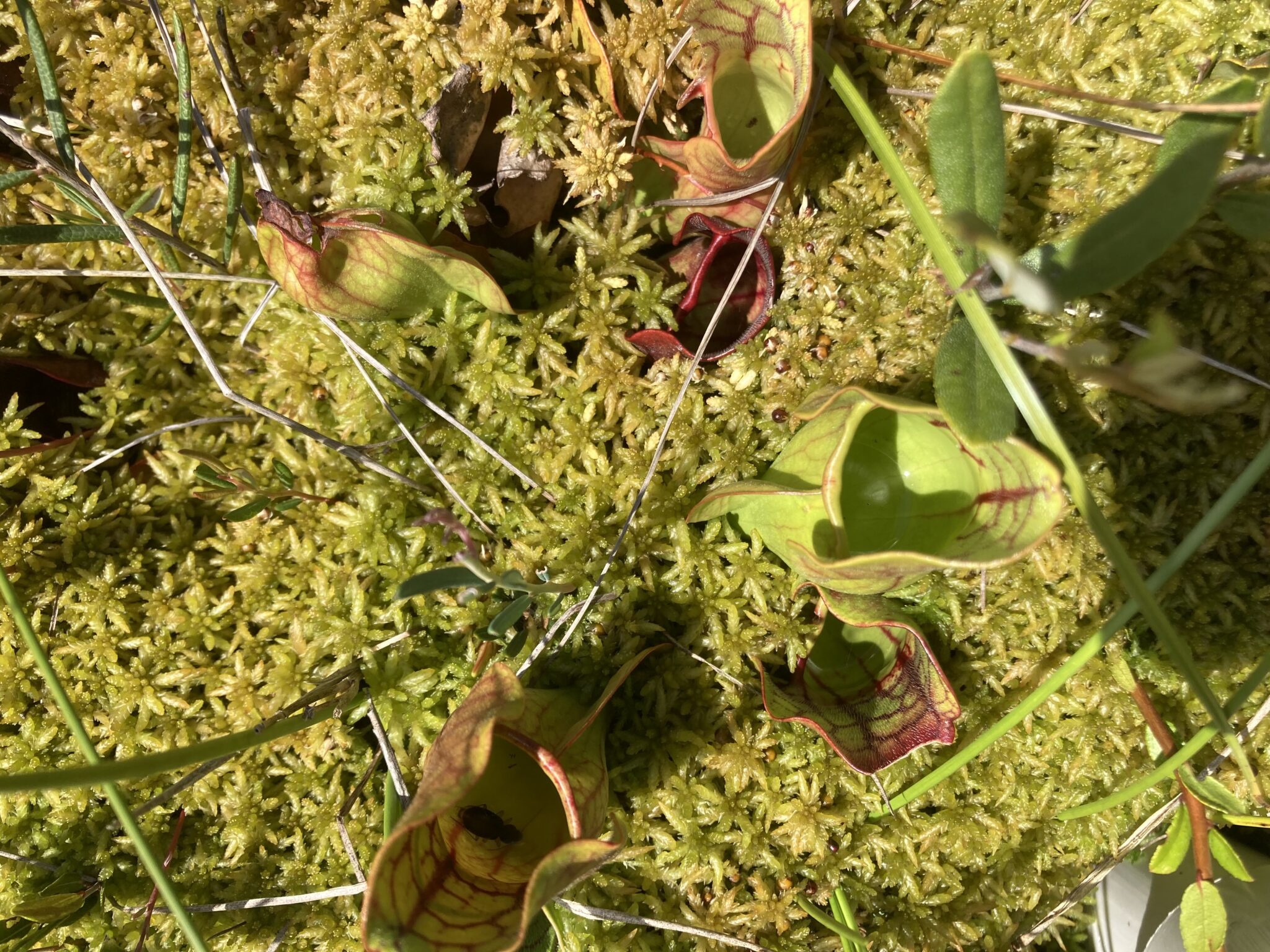
By studying peatlands, I’ve come to recognize that the hydrology of an ecosystem is key to its management. In Acadia National Park, resource managers are attempting to restore the natural flow of water in an impaired wetland, Great Meadow, by installing culverts that would minimize flooding and drought. This summer I led citizen scientists on “BioBlitzes” of Great Meadow: participants avidly documented its plant, animal, and fungal inhabitants to better understand how the planned changes will affect biodiversity in the park.
On one such BioBlitz, a participant leaned off the Jesup Trail boardwalk to photograph a patch of Sphagnum. “Look, it’s got hills and valleys!” she said.
I guess I’m not the only one who has realizations on boardwalks.
At the end of the day, what makes boardwalks special? They are human-made spaces contained within nature—constructed, curated, and linear, opposing the teeming, unruly life beneath. Boardwalks get us close to nature, but not too close, as we stay on the planks to avoid trampling the life below.
This paradox is at the heart of the National Park Service’s mission: how do we conserve nature by managing it, learn from it without altering it, and enjoy it without disturbing it? Boardwalks may represent the path forward for conservation into the future.
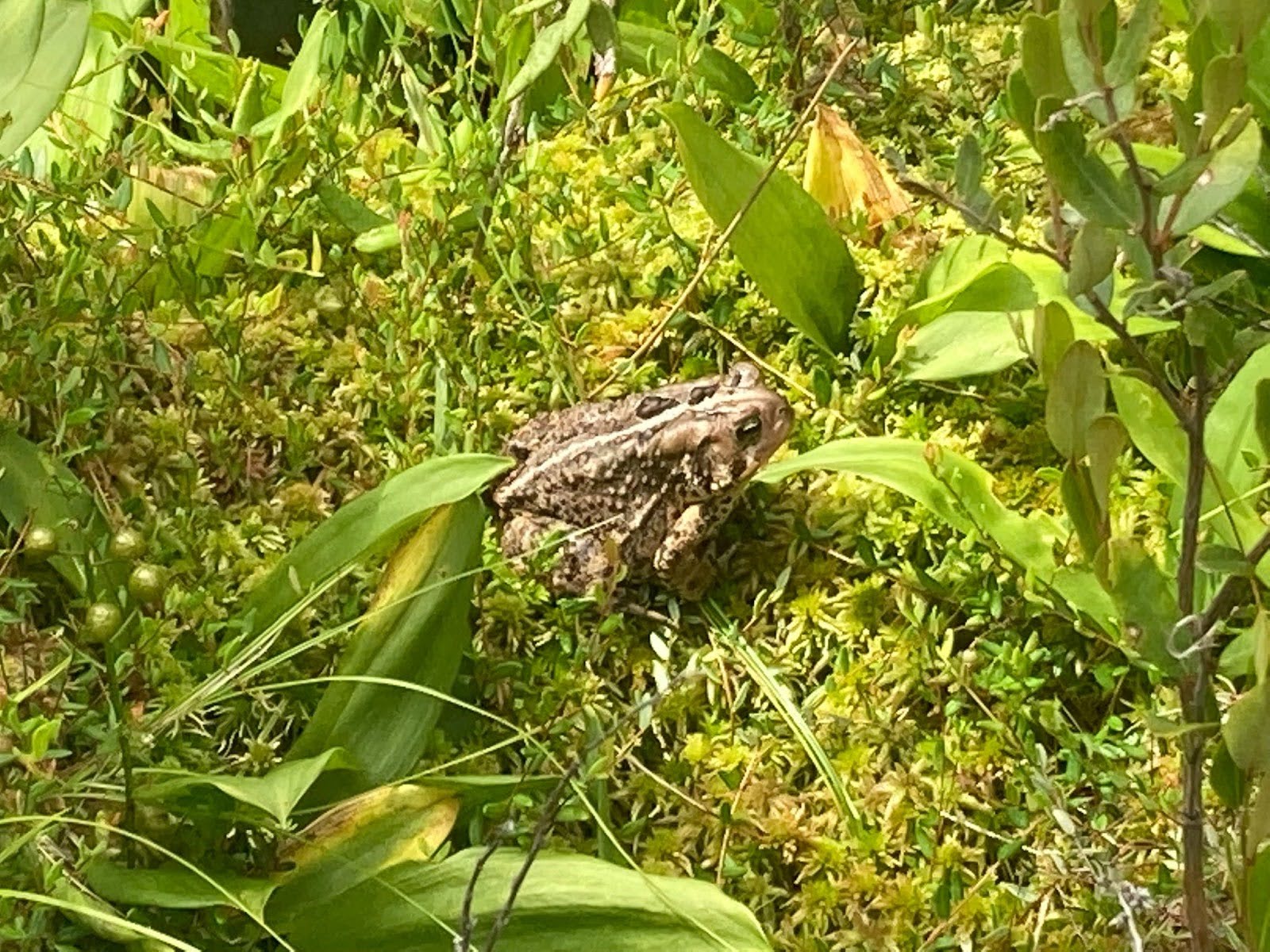
References
Kostka, J.E. et al. “The Sphagnum microbiome: New insights from an ancient plant lineage,” New Phytologist 211, 57-64 (2016). https://doi.org/10.1111/nph.13993
Priest, S. “Peatland Acidification and Understanding pH,” The University of Maine (2012). https://umaine.edu/oronobogwalk/wp-content/uploads/sites/393/2015/03/Peatland-Acidification-pH.pdf
Turetsky, M.R. “The Role of Bryophytes in Carbon and Nitrogen Cycling,” The Bryologist 106(3), 395-409 (2003). https://doi.org/10.1639/05
